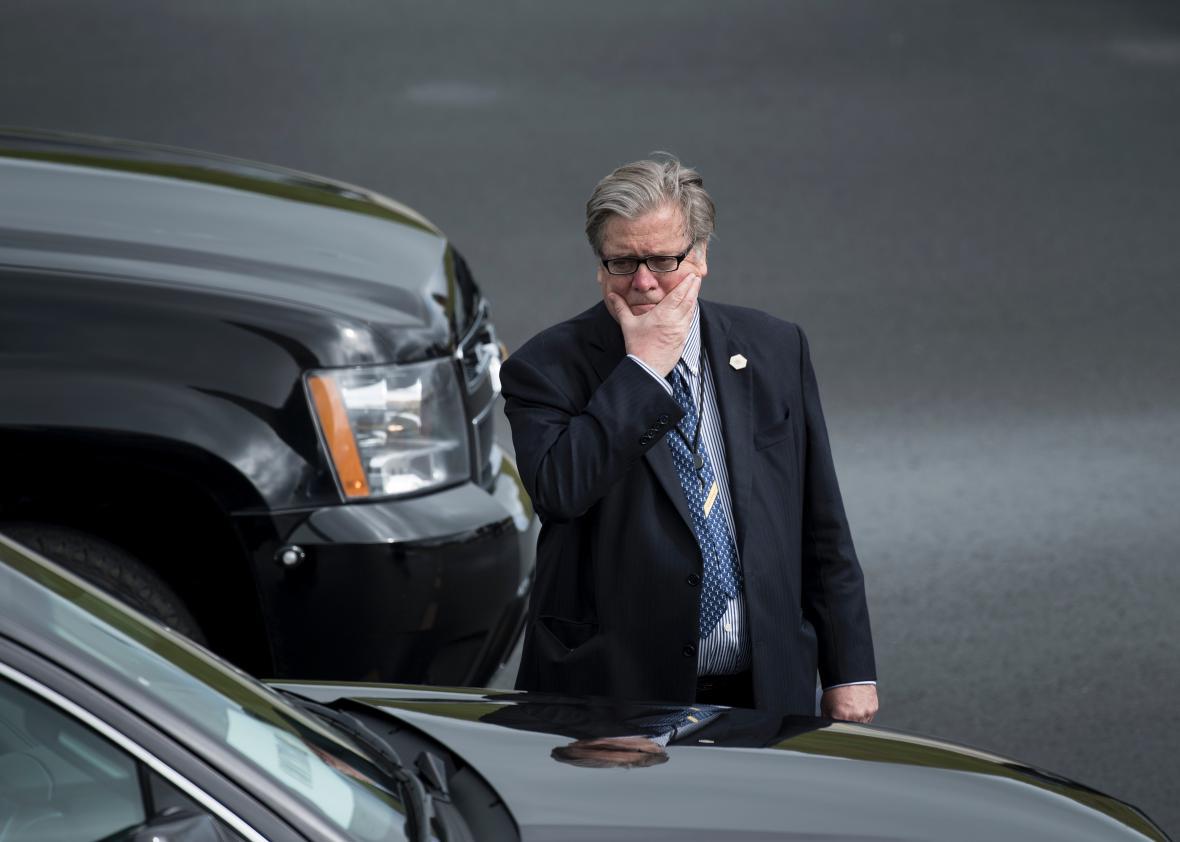It would have been so easy to spin the ouster of Steve Bannon as proof that the Trump administration isn’t racist and doesn’t support white nationalism. According to the New York Times, Bannon submitted his resignation on Aug. 7, meaning Trump had it in his pocket a full five days before white supremacists marched on Charlottesville, Virginia, last weekend. He could have pulled out the fire-Bannon card at any moment and played it as a repudiation of his chief strategist’s worldview. The fact that he didn’t bother to do so underscores just how little Trump cares about the fact that a sizable portion of the country thinks he supports white nationalism and/or how invested he is in cultivating the part of his base that loves him for it.
To be sure, Trump’s tolerance for Bannon’s nativist demagoguery has been well-established, and it couldn’t have been erased even with an expertly executed PR strategy surrounding his departure from the White House. It’s also true that Trump already demonstrated his extreme lack of interest in convincing people that he doesn’t covet the support of racists when he insisted on Tuesday that some of the white men who carried torches through the University of Virginia campus had been “very fine people.” During that same press conference, Trump called Bannon a “good person” and assured reporters that his adviser was “not a racist.”
Perhaps those remarks foreclosed any opening Trump had to use Bannon’s exit as a means of creating distance between himself and the alt-right movement Bannon helped incubate as the head of Breitbart. But it’s not like Trump himself was the only one who could have done it on behalf of the administration. How hard would it have been for his daughter Ivanka or his son-in-law Jared Kushnerto call a few reporters on background and explain that Bannon’s abhorrent beliefs had been at least part of the reason for his firing? “Sources close to the president said the decision to remove Mr. Bannon was motivated by a growing discomfort with his outlook on race and a desire to send a message that the administration does not want the support of Mr. Bannon’s white nationalist base.” Boom.
So far it appears that nobody in the White House has made that kind of call. Instead, the administration has left the media to talk about a host of lame reasons why Bannon had to go. As my colleague Ben Mathis-Lilley wrote earlier Friday, that list includes, “He argues too much with National Security Adviser H.R. McMaster, he maintains a high profile in the media that makes Trump jealous, he advocates a populist economic policy that’s at odds with the trickle-down conservatism of other advisers, Jared Kushner thinks he’s too much of a hard-liner, and so forth.”
It’s hard to escape the conclusion that the Trump White House feels it’s not very urgent or necessary to push back against the growing perception that the president actively sympathizes with white nationalism. Bannon’s resignation gave them the perfect opportunity to do so. They haven’t taken it because they don’t want to.
